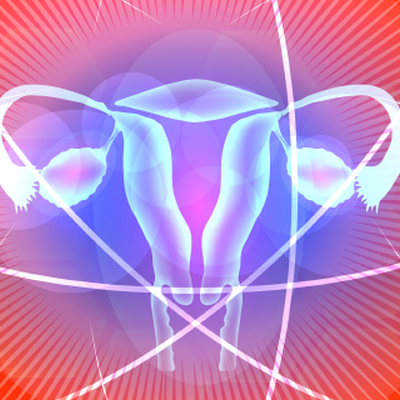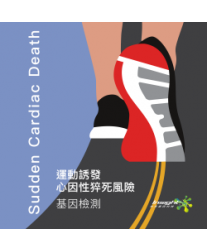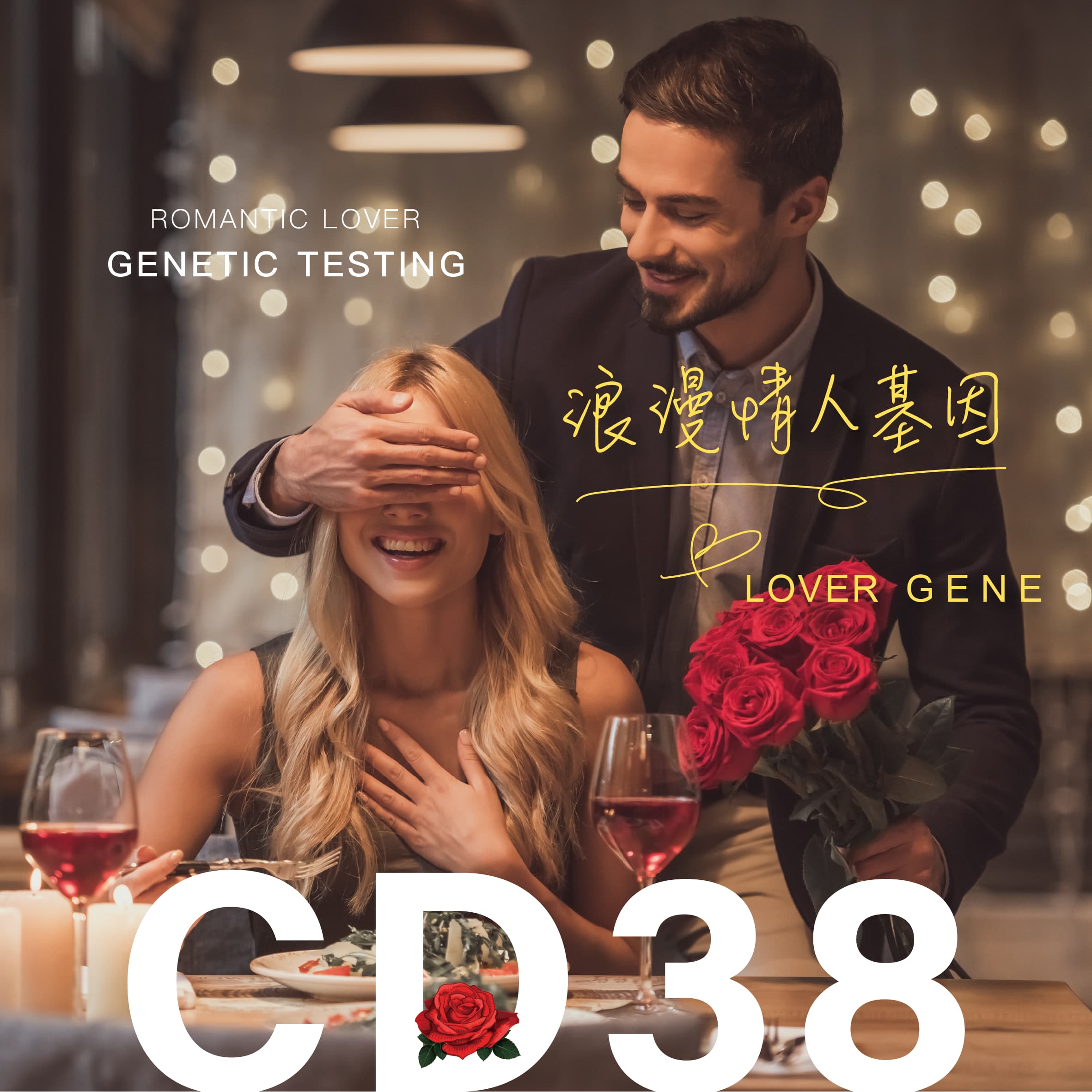


The report results are based on the ClinVar (https://www.ncbi.nlm.nih.gov/clinvar/) clinical genetic testing database provided by the National Center for Bioinformatics. We use this database to evaluate together with Insight’s proprietary program analysis. Gene variation and disease-causing risk index correlate with genotype and disease risk. In addition, it is also supported by the GENOME-WIDE ASSOCIATION STUDY (GWAS), which lists the gene loci related to diseases or traits and the genes that cause abnormal biosynthesis of proteins in the body. As the evidence supports the particular gene, the higher the gene mutations, the higher the disease occurs.Total Guardian Cancer | Gene detection of cardiovascular and neurodegenerative diseases evaluated 34,286 related SNPs to detection of 29 types of cancer: Lung cancer| Liver cancer| Colorectal cancer| Breast cancer| Oral cancer| Prostate cancer| Stomach cancer| Pancreatic cancer| Esophageal cancer| Ovarian cancer| Cervical cancer| Endometrial cancer| Chronic lymphocytic leukemia| Acute myeloid leukemia| Chronic myeloid leukemia| Non-Hodgkin’s lymphoma| Multiple myeloma| Nasopharyngeal carcinoma Head and neck cancer| Thyroid cancer| Bladder cancer| Basal cell carcinoma| Melanoma| Testicular cancer| Renal cell carcinoma| Glioma| Meningiomas| Hodgkin's lymphoma| Chondrosarcoma. Detection of 37 cardiovascular diseases: Atrial septal defect | Familial dilated cardiomyopathy | Familial hypertrophic cardiomyopathy | Long QT syndrome | Short QT syndrome | AnkyrinB syndrome | Familial atrial fibrillation | Family Heart Block | Arrhythmogenic Right Ventricular Myocardial Disease | Ventricular Fibrillation | Sinus Syndrome | Brugada Syndrome | Wolff-Parkinson-White Syndrome | Catecholamine-Sensitive Polymorphic Ventricular Pulse | Stroke | Myocardial Infarction | Artery Atherosclerosis| Essential hypertension| Familial migraine| Coronary artery calcification| Coronary artery disease| Pulmonary hypertension| Thoracic aortic aneurysm| Thrombosis-prone disease| Pulmonary vein occlusive disease| Upper valve aortic valve stenosis| Hairy Cerebrovascular disease | Fabry disease | Gestational diabetes | Type 2 diabetes | Familial HDL deficiency | Familial hypercholesterolemia | Familial hypertriglyceridemia | Sitosterolemia | Hereditary folate malabsorption | Periodic paralysis of thyroid toxicity | Congenital hypothyroidism. Detection of 10 neurodegenerative diseases: Progressive supranuclear palsy | Frontotemporal dementia | Dementia with Lewy body | Alzheimer's disease | Late-stage Alzheimer's disease | Parkinson's disease | Huntington's disease | NOTCH3 gene abnormality Stroke and Vascular Dementia | Multiple System Degeneration | Amyotrophic Lateral Sclerosis

What is the Happy Growth Manual?Every child is born with their own "genetic script" or "life manual." This genetic script describes the child's initial life storyline, and this storyline elaborates on his health. For example, he is born with calcium, iron deficiency, and possibly autism, depression, etc. We cannot detect the mutated genes before symptoms appear. These hindrance worries may be buried deep in his innate genes, waiting for one day. They may be waiting for the bad day to come and significantly attack their or your life plan. Why do you need a Happy Growth Manual?We can help you detect your child's genes early to understand their life manual (gene script) because genes carry the information that determines your traits. You can know whether s/he was born without certain nutrients or potential genes for developmental problems. You can even know whether s/he has autism, depression, diabetes, genetics, and other genes. Therefore, you can look ahead to their lifestyle, eating habits, and environment. So that s/he can reduce the risk of disease and then grow up healthily. Thus, we will rewrite the plot of their life, let them live a healthy life with wealth, and let them move towards a brighter future. Storing your child's gene poolForesight Gene provides the "Gene Bank" service. First, we give the child's genetic testing and analysis. As a result, the gene's disease risk data will be stored in the "Gene Bank." You can access your information in a short time whenever needed. Genetic testing allows us to identify the mutations that cause a genetic disorder in advance. Therefore, we can speed up diagnosis and treatment. Moreover, improve the efficiency of precision medicine during the treatment process. Furthermore, we know how to raise children healthily and avoid disease risks. Genetic testing descriptions 1. Genetic testing of nutritional deficiencies"Invisible hunger" is an obstacle to children's growth. Congenital nutrient deficiencies should be detected early and provided with complete nutritional supplements, such as congenital lack of vitamin D, which reduces the absorption of calcium ions by bones and affects physical development. Zinc and iron inadequacies will affect stunted growth, impaired physical and cognitive development, and produce iron-deficiency anemia. 2. Obesity risk detectionGenetic testing can predict a person's genetic risk of obesity from birth onward. Therefore, parents can plan for their children's eating behavior and habits, which can reduce the risk of chronic diseases, cardiovascular disease, or certain cancers. 3. Skin Inflammation/Anti-sensitivitySkin inflammation or allergy factors are complicated and may be caused by lifestyle, diet, and air, exposure to specific environments, or excessive skin sensitivity. If the condition is poor, it will affect children who cannot concentrate on their studies and eventually affect their quality of life. Dermatitis is partly caused by genetic susceptibility. Through genetic testing, symptoms can be prevented and alleviated early. 4. Skin moisturizing powerThe role of moisturizing is one of the essential factors in maintaining healthy skin. Proper cleansing and moisturizing will reduce the occurrence of skin allergies and inflammation. Especially for some patients with specific dermatitis, long-term moisturizing is required to maintain normal physiological functions and strengthen the skin barrier to reduce skin inflammation. Therefore, if you can detect the skin moisturizing critical genes, you will know how to enhance the maintenance and moisturize your skin. 5. Skin UV resistanceChildren's skin is more sensitive and delicate. Although moderate exposure to the sun is needed to supplement vitamin D, excessive ultraviolet rays can still cause skin damage. Children's skin stratum corneum and sebum membrane are relatively fragile. Therefore, a better understanding of your skin's UV resistance ability will guide you to take care of and protect your skin from UV light. 6. Skin freckles forming powerFreckles are small light brown spots on the face, most found in children and adolescents. Hereditary genes mainly cause them, and ultraviolet rays could aggravate them. Therefore, moderate sun protection and treatment can slow the progress of freckles formation. 7. Autism Spectrum RiskAutism Spectrum Risk is difficulties in social interaction or communication in early childhood, strong attachment to certain things, fixed singleness, and other phenomena. According to statistics, the proportion of children with autism is also increasing yearly. Suppose potential genetic risks can be detected early. In that case, we can pay attention to whether there are initial symptoms in advance. Then consult a doctor to observe and evaluate for early diagnosis and treatment. 8. Type 2 diabetes riskThe incidence of diabetes in children and adolescents has been increasing year by year. The disease risk can be known through family history and genetic testing. Thus, a well-prepared balanced diet and proper exercise can be adjusted to prevent the disease. 9. Thyroid disease riskIn addition to metabolic problems, children with congenital hyperthyroidism or hypothyroidism can also suffer from inattention, poor memory, and affected learning. 10. Depression riskPart of the cause of depression also comes from genetic inheritance. Children with this type of emotional disorder cannot quickly adapt to interpersonal relationships in school, resulting in low learning achievement and, more often, problems in parent-child relationships. Early detection, early prevention, and interventional treatment are required.

The report results are based on the ClinVar (https://www.ncbi.nlm.nih.gov/clinvar/) clinical genetic testing database provided by the National Center for Bioinformatics. We use this database to evaluate together with Insight’s proprietary program analysis. Gene variation and disease-causing risk index correlate with genotype and disease risk. In addition, it is also supported by the GENOME-WIDE ASSOCIATION STUDY (GWAS), which lists the gene loci related to diseases or traits and the genes that cause abnormal biosynthesis of proteins in the body. As the evidence supports the particular gene, the higher the gene mutations, the higher the disease occurs.Total Guardian Cancer | Gene detection of cardiovascular and neurodegenerative diseases evaluated 34,286 related SNPs to detection of 29 types of cancer: Lung cancer| Liver cancer| Colorectal cancer| Breast cancer| Oral cancer| Prostate cancer| Stomach cancer| Pancreatic cancer| Esophageal cancer| Ovarian cancer| Cervical cancer| Endometrial cancer| Chronic lymphocytic leukemia| Acute myeloid leukemia| Chronic myeloid leukemia| Non-Hodgkin’s lymphoma| Multiple myeloma| Nasopharyngeal carcinoma Head and neck cancer| Thyroid cancer| Bladder cancer| Basal cell carcinoma| Melanoma| Testicular cancer| Renal cell carcinoma| Glioma| Meningiomas| Hodgkin's lymphoma| Chondrosarcoma. Detection of 37 cardiovascular diseases: Atrial septal defect | Familial dilated cardiomyopathy | Familial hypertrophic cardiomyopathy | Long QT syndrome | Short QT syndrome | AnkyrinB syndrome | Familial atrial fibrillation | Family Heart Block | Arrhythmogenic Right Ventricular Myocardial Disease | Ventricular Fibrillation | Sinus Syndrome | Brugada Syndrome | Wolff-Parkinson-White Syndrome | Catecholamine-Sensitive Polymorphic Ventricular Pulse | Stroke | Myocardial Infarction | Artery Atherosclerosis| Essential hypertension| Familial migraine| Coronary artery calcification| Coronary artery disease| Pulmonary hypertension| Thoracic aortic aneurysm| Thrombosis-prone disease| Pulmonary vein occlusive disease| Upper valve aortic valve stenosis| Hairy Cerebrovascular disease | Fabry disease | Gestational diabetes | Type 2 diabetes | Familial HDL deficiency | Familial hypercholesterolemia | Familial hypertriglyceridemia | Sitosterolemia | Hereditary folate malabsorption | Periodic paralysis of thyroid toxicity | Congenital hypothyroidism. Detection of 10 neurodegenerative diseases: Progressive supranuclear palsy | Frontotemporal dementia | Dementia with Lewy body | Alzheimer's disease | Late-stage Alzheimer's disease | Parkinson's disease | Huntington's disease | NOTCH3 gene abnormality Stroke and Vascular Dementia | Multiple System Degeneration | Amyotrophic Lateral Sclerosis

The report results are based on the ClinVar (https://www.ncbi.nlm.nih.gov/clinvar/) clinical genetic testing database provided by the National Center for Bioinformatics. We use this database to evaluate together with Insight’s proprietary program analysis. Gene variation and disease-causing risk index correlate with genotype and disease risk. In addition, it is also supported by the GENOME-WIDE ASSOCIATION STUDY (GWAS), which lists the gene loci related to diseases or traits and the genes that cause abnormal biosynthesis of proteins in the body. As the evidence supports the particular gene, the higher the gene mutations, the higher the disease occurs. The cancer genetic test evaluated 23,443 related SNPs to detect 29 types of cancer: lung cancer| liver cancer| colorectal cancer| breast cancer| oral cancer| prostate cancer| gastric cancer| pancreatic cancer| esophageal cancer| ovarian cancer| Cervical cancer| Endometrial cancer| Chronic lymphocytic leukemia| Acute myelogenous leukemia| Chronic myelogenous leukemia| Non-Hodgkin’s lymphoma| Multiple myeloma| Nasopharyngeal cancer| Head and neck cancer| Thyroid cancer| Bladder cancer | Basal cell carcinoma| Melanoma| Testicular cancer| Renal cell carcinoma| Glioma| Meningioma| Hodgkin’s lymphoma| Chondrosarcoma genes are associated with the risk of disease.

The report results are based on the ClinVar (https://www.ncbi.nlm.nih.gov/clinvar/) clinical genetic testing database provided by the National Center for Bioinformatics. We use this database to evaluate together with Insight’s proprietary program analysis. Gene variation and disease-causing risk index correlate with genotype and disease risk. In addition, it is also supported by the GENOME-WIDE ASSOCIATION STUDY (GWAS), which lists the gene loci related to diseases or traits and the genes that cause abnormal biosynthesis of proteins in the body. As the evidence supports the particular gene, the higher the gene mutations, the higher the disease occurs. The cardiovascular and neurodegenerative disease genetic test evaluated 10,843 related SNPs to detect 37 cardiovascular diseases: atrial septal defect | familial dilated cardiomyopathy | familial hypertrophic cardiomyopathy | long QT syndrome | short QT syndrome | AnkyrinB syndrome | familial atrial fibrillation | familial heart block | arrhythmogenic right ventricular cardiomyopathy | ventricular fibrillation | sick sinus syndrome | White's syndrome | Catecholamine sensitive polymorphic ventricular pulse | Stroke | Myocardial infarction | Atherosclerosis | Primary hypertension | Familial migraine | Coronary artery calcification | Coronary artery disease | Pulmonary hypertension | Tumors | Thrombosis-prone diseases | Pulmonary venous occlusive diseases | Upper valve aortic valve stenosis | Hairy cerebrovascular disease | Fabry disease | Gestational diabetes | Type 2 diabetes | Familial HDL deficiency | Syndrome | Familial hypertriglyceridemia | Sitosterolemia | Hereditary folate malabsorption | Periodic paralysis of thyroid toxicity | Congenital hypothyroidism. Detection of 9 neurodegenerative diseases: Progressive supranuclear palsy | Frontotemporal dementia | Dementia with Lewy body | Alzheimer's disease | Parkinson's disease | Huntington's disease | NOTCH3 gene abnormality Stroke and Vascular Dementia | Multiple System Degeneration | Amyotrophic Lateral Sclerosis

Taiwan-specific stroke mutation gene Cerebral autosomal-dominant arteriopathy with subcortical infarcts and leukoencephalopathy (CADASIL) is the most common hereditary cerebral arteriole lesion caused by a single gene mutation, NOTCH3 gene. According to the survey, 230,000 people in Taiwan have NOTCH3 gene mutations and may even have cerebrovascular disease without knowing it. Mutations in the NOTCH3 gene cause inherited intermolecular lesions in the brain, ultimately affecting brain function.

Most cases of Parkinson's disease occur in people without a family history of the disease. These sporadic cases may not be inherited or have an unknown inheritance pattern. In familial cases of Parkinson's disease, the inheritance pattern varies according to the altered gene. If the LRRK2 or SNCA genes are involved, the disorder is inherited in a dominant somatic pattern, meaning that one altered gene per cell is enough to cause the disease. In most cases, a parent of affected individuals is in this condition. If the PARK7, PINK1, or PRKN genes are involved, Parkinson's disease is inherited in a recessive somatic pattern. This type of inheritance means that two genes are changed in each cell. In most cases, the parents of individuals with somatic recessive Parkinson's disease carry an altered gene without any signs and symptoms. When genetic changes reduce the risk of developing Parkinson's, the inheritance pattern is often unknown.

Alzheimer's disease is the most common type of dementia. It is a degenerative disease of the brain, and it will gradually lose memory, judgment, and operation. Diseases can be classified as early onset or late onset.Early-onset symptoms appear before age 65, while late-onset symptoms occur after age 65.Memory loss is the key symptom of Alzheimer's disease. The longer the time, the more memory loss will worsen and eventually affect daily life activities (getting lost, confused, unable to distinguish other people's things.). As the disease progresses, personality and behavior will gradually change, making joining social activities and everyday interactions challenging. People with this disease usually require total care in the later stages. Affected people typically survive 8 to 10 years after symptoms appear, but the illness lasts 25 years.

The report results are based on the ClinVar (https://www.ncbi.nlm.nih.gov/clinvar/) clinical genetic testing database provided by the National Center for Bioinformatics. We use this database to evaluate together with Insight’s proprietary program analysis. Gene variation and disease-causing risk index correlate with genotype and disease risk. In addition, it is also supported by the GENOME-WIDE ASSOCIATION STUDY (GWAS), which lists the gene loci related to diseases or traits and the genes that cause abnormal biosynthesis of proteins in the body. As the evidence supports the particular gene, the higher the gene mutations, the higher the disease occurs. The cardiovascular and neurodegenerative disease genetic test evaluated 10,843 related SNPs to detect 37 cardiovascular diseases: atrial septal defect | familial dilated cardiomyopathy | familial hypertrophic cardiomyopathy | long QT syndrome | short QT syndrome | AnkyrinB syndrome | familial atrial fibrillation | familial heart block | arrhythmogenic right ventricular cardiomyopathy | ventricular fibrillation | sick sinus syndrome | White's syndrome | Catecholamine sensitive polymorphic ventricular pulse | Stroke | Myocardial infarction | Atherosclerosis | Primary hypertension | Familial migraine | Coronary artery calcification | Coronary artery disease | Pulmonary hypertension | Tumors | Thrombosis-prone diseases | Pulmonary venous occlusive diseases | Upper valve aortic valve stenosis | Hairy cerebrovascular disease | Fabry disease | Gestational diabetes | Type 2 diabetes | Familial HDL deficiency | Syndrome | Familial hypertriglyceridemia | Sitosterolemia | Hereditary folate malabsorption | Periodic paralysis of thyroid toxicity | Congenital hypothyroidism. Detection of 9 neurodegenerative diseases: Progressive supranuclear palsy | Frontotemporal dementia | Dementia with Lewy body | Alzheimer's disease | Parkinson's disease | Huntington's disease | NOTCH3 gene abnormality Stroke and Vascular Dementia | Multiple System Degeneration | Amyotrophic Lateral Sclerosis

The report results are based on the ClinVar (https://www.ncbi.nlm.nih.gov/clinvar/) clinical genetic testing database provided by the National Center for Bioinformatics. We use this database to evaluate together with Insight’s proprietary program analysis. Gene variation and disease-causing risk index correlate with genotype and disease risk. In addition, it is also supported by the GENOME-WIDE ASSOCIATION STUDY (GWAS), which lists the gene loci related to diseases or traits and the genes that cause abnormal biosynthesis of proteins in the body. As the evidence supports the particular gene, the higher the gene mutations, the higher the disease occurs. 10 testing for women including colorectal cancer | breast cancer | lung cancer | liver cancer | thyroid cancer | ovarian cancer | cervical cancer | stomach cancer | Alzheimer's disease | Detection and analysis of 13,237 related SNPs.

Testing itemsGene detection and analysis of 6858 related SNPs in hereditary breast cancer Breast Cancer OverviewAccording to statistics from Taiwan 2019, the Ministry of Health and Welfare, about 50,000 people died of cancer (malignant tumor), accounting for nearly 30% of the total deaths. On average, 1 out of every 3 deaths from cancer (malignant tumor), and cancer has been the top 10 causes of death in Taiwan for 38 years. In addition, cancer is the second leading cause of death globally. On average, 1 in 6 people dies from cancer (malignant tumor). Experts estimate that about 40% of cancers can be prevented, and starting with "prevention" is the most fundamental way. We will analyze genetic testing and assess the cancer risk, as mentioned earlier (malignant tumor). This insight can help in early health management with regular health checkups, reduce the risk of delaying treatment, and effectively plan lifestyle and diet. SuitableHealthy people at any age | Precisely health plan management | People with a family history of the above diseases | People with specific medical conditions Genetic testing limitations: 1. Each type of cancer analysis includes detailed recommended medical departments, also life and diet recommendations. The analysis report can be used as support information with physician diagnosis for treatment and plan for a healthy life. 2. The results of the gene analysis report may show the risk of family genetic diseases because they can pass through from parents to children.Therefore, this information can prevent the risk before it happens Furthermore, protect the family's health efficiently. 3. The personalized genetic test report is based on academic research reports. The risk score of the analyzed clinical variation and disease correlation can use as a reference for prevention and physician's diagnosis. However, this report is not regarded as an absolute diagnosis result. It is a support reference and the basis for planning future health examinations and nutritional food supplements.

Testing itemsGene detection and analysis of 2837 related SNPs in hereditary colorectal cancer Colorectal Cancer OverviewAccording to statistics from Taiwan 2019, the Ministry of Health and Welfare, about 50,000 people died of cancer (malignant tumor), accounting for nearly 30% of the total deaths. On average, 1 out of every 3 deaths from cancer (malignant tumor), and cancer has been the top 10 causes of death in Taiwan for 38 years. In addition, cancer is the second leading cause of death globally. On average, 1 in 6 people dies from cancer (malignant tumor). Experts estimate that about 40% of cancers can be prevented, and starting with "prevention" is the most fundamental way. We will analyze genetic testing and assess the cancer risk, as mentioned earlier (malignant tumor). This insight can help in early health management with regular health checkups, reduce the risk of delaying treatment, and effectively plan lifestyle and diet. SuitableHealthy people at any age | Precisely health plan management | People with a family history of the above diseases | People with specific medical conditions Genetic testing limitations: 1. Each type of cancer analysis includes detailed recommended medical departments, also life and diet recommendations. The analysis report can be used as support information with physician diagnosis for treatment and plan for a healthy life. 2. The results of the gene analysis report may show the risk of family genetic diseases because they can pass through from parents to children. Therefore, this information can prevent the risk before it happens. Furthermore, protect the family's health efficiently. 3. The personalized genetic test report is based on academic research reports. The risk score of the analyzed clinical variation and disease correlation can use as a reference for prevention and physician's diagnosis. However, this report is not regarded as an absolute diagnosis result. It is a support reference and the basis for planning future health examinations and nutritional food supplements.

The report results are based on the ClinVar (https://www.ncbi.nlm.nih.gov/clinvar/) clinical genetic testing database provided by the National Center for Bioinformatics. We use this database to evaluate together with Insight’s proprietary program analysis. Gene variation and disease-causing risk index correlate with genotype and disease risk. In addition, it is also supported by the GENOME-WIDE ASSOCIATION STUDY (GWAS), which lists the gene loci related to diseases or traits and the genes that cause abnormal biosynthesis of proteins in the body. As the evidence supports the particular gene, the higher the gene mutations, the higher the disease occurs. 10 testing for men including colorectal cancer | liver cancer | lung cancer | oral cancer | prostate cancer | esophageal cancer | stomach cancer | bladder cancer | Detection and analysis of 7,199 related SNPs.

Testing itemsGene detection and analysis of 9809 related SNPs in hepatobiliary and gastroenterology Cancer overviewAccording to statistics from Taiwan 2019, the Ministry of Health and Welfare, about 50,000 people died of cancer (malignant tumor), accounting for nearly 30% of the total deaths. On average, 1 out of every 3 deaths from cancer (malignant tumor), and cancer has been the top 10 causes of death in Taiwan for 38 years. In addition, cancer is the second leading cause of death globally. On average, 1 in 6 people dies from cancer (malignant tumor). Experts estimate that about 40% of cancers can be prevented, and starting with "prevention" is the most fundamental way. We will analyze genetic testing and assess the cancer risk, as mentioned earlier (malignant tumor). This insight can help in early health management with regular health checkups, reduce the risk of delaying treatment, and effectively plan lifestyle and diet. SuitableHealthy people at any age | Precisely health plan management | People with a family history of the above diseases | People with specific medical conditions Genetic testing limitations: 1. Each type of cancer analysis includes detailed recommended medical departments, also life and diet recommendations. The analysis report can be used as support information with physician diagnosis for treatment and plan for a healthy life. 2. The results of the gene analysis report may show the risk of family genetic diseases because they can pass through from parents to children. Therefore, this information can prevent the risk before it happens. Furthermore, protect the family's health efficiently. 3. The personalized genetic test report is based on academic research reports. The risk score of the analyzed clinical variation and disease correlation can use as a reference for prevention and physician's diagnosis. However, this report is not regarded as an absolute diagnosis result. It is a support reference and the basis for planning future health examinations and nutritional food supplements.

Testing itemsCancer gene detection and analysis of 12,706 related SNPs to detect 4 types of cancer: breast cancer | ovarian cancer | cervical cancer | endometrial cancer Cancer overviewAccording to statistics from Taiwan 2019, the Ministry of Health and Welfare, about 50,000 people died of cancer (malignant tumor), accounting for nearly 30% of the total deaths. On average, 1 out of every 3 deaths from cancer (malignant tumor), and cancer has been the top 10 causes of death in Taiwan for 38 years. In addition, cancer is the second leading cause of death globally. On average, 1 in 6 people dies from cancer (malignant tumor). Experts estimate that about 40% of cancers can be prevented, and starting with "prevention" is the most fundamental way. We will analyze genetic testing and assess the cancer risk, as mentioned earlier (malignant tumor). This insight can help in early health management with regular health checkups, reduce the risk of delaying treatment, and effectively plan lifestyle and diet. SuitableHealthy people at any age | Precisely health plan management | People with a family history of the above diseases | People with specific medical conditions Genetic testing limitations:1. Each type of cancer analysis includes detailed recommended medical departments, also life and diet recommendations. The analysis report can be used as support information with physician diagnosis for treatment and plan for a healthy life. 2. The results of the gene analysis report may show the risk of family genetic diseases because they can pass through from parents to children. Therefore, this information can prevent the risk before it happens. Furthermore, protect the family's health efficiently. 3. The personalized genetic test report is based on academic research reports. The risk score of the analyzed clinical variation and disease correlation can use as a reference for prevention and physician's diagnosis. However, this report is not regarded as an absolute diagnosis result. It is a support reference and the basis for planning future health examinations and nutritional food supplements.

The report results are based on the ClinVar (https://www.ncbi.nlm.nih.gov/clinvar/) clinical genetic testing database provided by the National Center for Bioinformatics. We use this database to evaluate together with Insight’s proprietary program analysis. Gene variation and disease-causing risk index correlate with genotype and disease risk. In addition, it is also supported by the GENOME-WIDE ASSOCIATION STUDY (GWAS), which lists the gene loci related to diseases or traits and the genes that cause abnormal biosynthesis of proteins in the body. As the evidence supports the particular gene, the higher the gene mutations, the higher the disease occurs.

The coronavirus disease 2019 (COVID-19) pandemic caused by severe acute respiratory syndrome coronavirus (SARS-CoV-2) infection. This pandemic is an enormous threat to global economic and health security. Some infected individuals are asymptomatic, while others develop acute respiratory distress syndrome and severe life-threatening viral pneumonia. Although individual risk factors contribute to disease severity (e.g., increasing age, male sex, and higher body mass index), these risk factors cannot explain all the variability in disease severity observed between individuals. In addition, many factors may affect these individual differences. Scientists have also raised the possibility that genetic variation for the viral S protein receptor and ACE2 (angiotensin-converting enzyme 2) in human cells may lead to male and worsening clinical outcomes in some regions. Furthermore, the scientists also discovered that lipoproteins element E (ApoE) gene variation might increase the risk of COVID-19 infection and acute and severe illness.

In recent years, exercise has become a global trend, whether it is marathon, fitness training or other forms of exercise. With the rise of this trend, we must also pay attention to the possible health risks during exercise, especially the induction of psychological factors. Disease occurs.Many professional athletes often want to pursue extreme results, but in fact they need to understand their own health conditions. Prolonged, high-intensity exercise can put stress on the heart and other organs, increasing the risk of heart disease or sudden cardiac death.Therefore, the "Exercise-Induced Sudden Cardiac Death Risk Gene Test" can accurately detect genetic variations related to cardiogenic diseases, thereby assessing and analyzing an individual's cardiovascular system health risk, and providing personalized lifestyle, diet and exercise recommendations to reduce the risk of disease or The risk of sudden death allows athletes to know how to adjust to their own limits when exercising, so that they can better obtain the health benefits brought by exercise.※Biological enhancement handouts:When performing high-intensity exercise, sudden increase in intensity of exercise, or exercise without proper warm-up, a greater load will be placed on the heart and vascular system, requiring the heart to transport more blood oxygen to the exercising muscles, which may increase the risk of arrhythmia. , or symptoms of coronary insufficiency. These increases in load may cause the heart to be unable to supply blood normally or increase the burden, and even lead to sudden cardiac death, especially for individuals with underlying heart problems, genetic mutations or diseases.Test itemsatherosclerosiscoronary artery calcificationcoronary artery diseasemyocardial infarctionfamilial dilated cardiomyopathyfamilial hypertrophic cardiomyopathyArrhythmic right ventricular cardiomyopathyBrugueda syndromeCatecholamine-sensitive polymorphic ventricular pulsatilitylong QT syndromeshort QT syndromeAnkyrin-B syndromefamilial atrial fibrillationventricular fibrillationWopa White Syndromesick sinus syndromehereditary heart block

The report results are based on the ClinVar (https://www.ncbi.nlm.nih.gov/clinvar/) clinical genetic testing database provided by the National Center for Bioinformatics. We use this database to evaluate together with Insight’s proprietary program analysis. Gene variation and disease-causing risk index correlate with genotype and disease risk. In addition, it is also supported by the GENOME-WIDE ASSOCIATION STUDY (GWAS), which lists the gene loci related to diseases or traits and the genes that cause abnormal biosynthesis of proteins in the body. As the evidence supports the particular gene, the higher the gene mutations, the higher the disease occurs.

The onset of age-related macular degeneration is related to many factors, such as aging | family inheritance | genetic variation | and eating habits. Regarding genetics, people with a family history of macular degeneration will have a 50% risk of disease. According to the mutations in genes such as ARMS2 | CFH are associated with the pathogenesis of macular degeneration.

Alcohol dehydrogenase (ADH) is in the liver cells, located on human chromosome 12. Its genotype is related to the ability for alcohol metabolism. The World Health Organization (WHO) listed alcohol-converted acetaldehyde as a primary carcinogen in 2007. Excessive use and abuse of alcohol are one of the risk factors for dementia.After drinking alcohol, there are two primary genes for alcohol metabolism: aldehyde dehydrogenase2 (ALDH2) and alcohol dehydrogenase 1B (ADH1B). The aldehyde dehydrogenase2 (ALDH2) affects the metabolic rate of acetaldehyde in the human body. The genotype of ALDH2 is GG, which will quickly metabolize acetaldehyde into acetic acid, and finally, acetic acid will be decomposed into carbon dioxide and water before being excreted. Suppose the ALDH2 genotypes are AA and GA. In that case, the metabolism of acetaldehyde into acetic acid will slow down. Then, the concentration of acetaldehyde in the body increases and causes blush after drinking | nausea | vomiting, and feeling uncomfortable. The genotype of ADH1B is CC, related to poor alcohol metabolism. Therefore, after drinking, the alcohol concentration increases and leads to dizziness.An individual only uses genetic analysis to increase information about their own body. In addition, the influence of genes is also caused by environmental factors | diet factors | and life stress factors... Knowing congenital physique (gene) weaknesses early and proper health management is an excellent way to maintain your lifelong.

DNA is involved in the control of cell growth and division. "Telomere" (TELOMERE) is an important indicator to protect DNA stability because it is a region of repetitive DNA sequences at the end of a chromosome.According to research, telomere length is related to human age and pattern of life. Each time a cell divides, the telomeres become slightly shorter. Eventually, they become too short, and the cell can no longer divide and function; finally, the cell dies. Therefore, detecting the telomere will indicate the actual age, which is the indicator of ้healthcare and beauty guidelines | healthy food | lifestyle improvement, and cell youth.

FTO gene on human chromosome 16. The literature has pointed out that specific alleles of the FTO gene are associated with obesity, and genetic variation can affect appetite regulation. Those with genetic variation are prone to hunger, resulting in weight imbalance. Leptin (LEP) is a hormone that involves body weight regulation. Leptin receptor protein is found on the surface of cells in many body organs and tissues, including a part of the brain, called the hypothalamus. The hypothalamus controls hunger and thirst and other functions such as sleep, moods, and body temperature. In the hypothalamus, signaling affects appetite after leptin binds to its receptor. It regulates energy balance by suppressing appetite and reducing fat storage in adipocytes. Studies have shown that this protein is related to various endocrine functions. Those with genetic mutations are prone to weight imbalance and obesity.

"Obesity is a chronic disease," says the World Health OrganizationAccurate obesity type analysis helps you easily master fitness methods! !Fitness typeThis gene is involved in fat breakdown and regulation of energy balance in the body. Those with abnormal genetic results are more likely to cause fat accumulation to be distributed above the waist and hips. .Beer bellyPeople with abnormal results of this gene have inhibited fat breakdown, resulting in excessive fat accumulation in internal organs. However, the abdominal adipose tissue of the human body is more likely to become a preferential site for fat deposition, especially in men than in women, resulting in a "beer belly" obese body.Prone to diabetesFor those with abnormal genetic results, the fat mainly accumulates in the waist and buttocks. Women are also affected by natural estrogen so that fat accumulates in the lower abdomen and buttocks at the same time, resulting in an obese body mainly below the buttocks, forming a "pear" figure, which is easy to cause second type diabetes.Puff typeThose in the high-risk group due to genetic results have higher fasting blood lipids, and the fat is not easily metabolized, resulting in an excessively high BMI. Both visceral fat and subcutaneous fat tend to exceed the standard.Slow metabolizerPeople with abnormal genetic results have a higher probability of developing obesity, type 2 diabetes, hypertension, hyperlipidemia and other obesity-related metabolic diseases.Fitness guidelines to help you lose weight tailor-made!Fat is not a blessing, health and thinner more!

GSTM1 and GSTT1 affect the content of vitamin C in the blood. Vitamin C intake should be increased if one of the genotypes is deficient. If both genotypes are deficient, the concentration of vitamin C will be 20% lower than usual, affecting the Antioxidant capacity in the body. Drug or toxins removal is carried out through two-stage metabolism in the liver. The GST enzyme family is responsible for coupling the toxins or drugs reacted in the first stage with hydrophilic chemical functions.Therefore, the metabolites are water-soluble and then rapidly excreted from the body in sweat or urine. In addition, GST also can resist oxidation and scavenge free radicals. Studies have found that vitamin C levels in the blood will decrease when the GST gene is defective. Thus, it will decrease the body's ability to resist oxidation and may eventually cause carcinogens to damage cells' DNA. Thereby causing cell mutations leading to cancer. There are seven types of GST family, among which GSTT1 and GSTM1 are the two most frequently mutated genes. About 10-50% of people in Asian ethnic groups lack GSTT1 and 20-60% lack GSTM1. Studies on oral cancer have pointed out that people who lack both GSTT1 and GSTM1 have a three times higher risk of developing cancer than those who have both normal genes, and those who lack both genes have a 1.79 times higher risk of developing liver cancer.

PM2.5 is the most heard air pollution indicator in our daily life. Especially in winter, the PM2.5 concentration will exceed the standard. Exposure to PM2.5 pollution significantly causes adverse health impacts. Children and allergy sufferers are the most likely to be more susceptible to PM2.5. PM2.5 are fine particles containing carbon and absorb various toxicsubstances on their surface, such as dioxins, environmental pollution, polychlorinated biphenyls (PCBs), polycyclic aromatic hydrocarbons (PAH), tiny heavy metals, benzene, etc. These substances can easily pass through the lung barrier and penetrate human body cells, causing a threat to human health. Most PM2.5 is human-made air pollution or sand and dust in the natural environment, such as vehicle exhaust emissions, cigarettes, waste smoke from combustion, soil dust,microorganisms, or mold spores. When human inhales such harmful substances, our body willactivate the detoxification mechanism to break down the toxic substances and excrete them out of the body. If these toxins are not excretion immediately, they will form carcinogenic factors and cause cancer. Due to human genetic variation, each person has a different abilitymetabolizing these harmful substances, and the risk of causing cancer is also different. Therefore, by eliminating carcinogens genetic testing can help people understand their body's ability to detoxify and try to avoid or reduce inhalation of harmful substances. Moreover, improve the ability to remove toxic substances from the body, and reduce the occurrence of diseases. Detected geneCYP1A1The CYP1A1 gene is one of the members of the first-stage CYP detoxification family, which is involved in the metabolism of many environmental carcinogens, such as polycyclic aromatic hydrocarbons (PAHs), aromatic amines, and heterocyclic amines. This carcinogen is found in coal, coke, smoke, smoking, kitchen fume, burnt and burnt food, etc. CYP1A1 converts carcinogens into intermediates that are harmful to the body, and then the second-stage detoxification genes clear the intermediates. Nrf2The Nrf2 (NFE2L2) signaling pathway regulates the gene expression of antioxidant and second-stage detoxification enzymes. When the oxidative substances reach a specific concentration in the cell, the Nrf2 signal will be activated to reduce the oxidative stress in the cell. Oxidative stress is one of the causes of chronic diseases, such as cardiovascular or neurodegenerative diseases, which the activation of the Nrf2 signal would reduce. Thus, the Nrf2 signal is an essential mechanism for protecting the body. NQO1Long-term exposure to the organic solvent benzene will increase the toxicity of blood cells and cause cancer risk. Benzoquinone is one of the main carcinogens that is incredibly harmful to the human body. Benzoquinone is an intermediate product converted from benzene by the first-stage detoxification gene. So, it is necessary to quickly convert benzoquinone into water-soluble hydroquinone (hydroquinone) through the second-stage detoxification gene NQO1 and excrete it from the body through urine or sweat. So, when the NQO1 gene produces deficiencies, it increases benzene poisoning risk. SOD2Superoxide Dismutase (SOD) is an active substance derived from organisms that can eliminate harmful substances produced in the body during metabolism. The human body must undergo many biochemical reactions to maintain normal physiological functions. These biochemical reactions will be accompanied by producing harmful free radicals, such as environmental pollution, etc. Gene mutations may lead to the insufficient antioxidant capacity of cells and affect human metabolism. GSTM1, GSTT1GSTM1 and GSTT1 affect the content of vitamin C in the blood. Vitamin C intake should be increased if one of the genotypes is deficient. If both genotypes are deficient, the concentration of vitamin C will be 20% lower than usual, affecting the Antioxidant capacity in the body.

According to research, the genetic probability of depression is relatively high. Even if there is a family history of the disease, it does not necessarily cause it. The poor interaction between genes and the environment usually causes it. Through genetic testing, people with the mutation genotype of the susceptibility gene for depression have a higher probability of suffering from depression, and the probability of depression is much higher than that of people with high-stress tolerance. Genes are inherently immutable and carry personalized genetic information. Therefore, the earlier detection, the earlier prediction.Life can optimize through appropriate health planning and guidance. Causes of depression1. Genetics, family historyHaving a family history of depression may increase the risk. Depression is a complex trait, meaning there might be many genes, each responsible for its role, rather than a single gene that increases the risk of the disease. Like most psychiatric disorders, the genetics of depression is complex. It does not directly affect the disease, like the influence of a single gene in neurological disorders such as Huntington's disease or cystic fibrosis. 2. Encountered a significant eventMajor life events such as a new job, graduation, or marriage can also lead to feeling blues. Significant changes include new positions, job loss, income impact, marriage, or retirement. 3. Personality Traits 4. MedicationCertain medicines may cause depression by themselves or side effects. For example, barbiturates, benzodiazepines, and isotretinoin (Absorica, Amnesteem, Claravis, Myorisan, Zenatane), are sometimes associated with depression. Likewise, glucocorticoids, opioids (codeine, morphine), and anticholinergic drugs for stomach cramps, sometimes cause mood changes and swings. Even blood pressure medications, beta-blockers. have been linked to depression. 5. Other illnesses 6. Neurological substance secretion disorder in the brain 7. Pregnancy, giving birth

According to research, the genetic probability of depression is relatively high. Even if there is a family history of the disease, it does not necessarily cause it. The poor interaction between genes and the environment usually causes it. Through genetic testing, people with the mutation genotype of the susceptibility gene for depression have a higher probability of suffering from depression, and the probability of depression is much higher than that of people with high-stress tolerance. Genes are inherently immutable and carry personalized genetic information. Therefore, the earlier detection, the earlier prediction.Life can optimize through appropriate health planning and guidance. Causes of depression1. Genetics, family historyHaving a family history of depression may increase the risk. Depression is a complex trait, meaning there might be many genes, each responsible for its role, rather than a single gene that increases the risk of the disease. Like most psychiatric disorders, the genetics of depression is complex. It does not directly affect the disease, like the influence of a single gene in neurological disorders such as Huntington's disease or cystic fibrosis. 2. Encountered a significant eventMajor life events such as a new job, graduation, or marriage can also lead to feeling blues. Significant changes include new positions, job loss, income impact, marriage, or retirement. 3. Personality Traits 4. MedicationCertain medicines may cause depression by themselves or side effects. For example, barbiturates, benzodiazepines, and isotretinoin (Absorica, Amnesteem, Claravis, Myorisan, Zenatane), are sometimes associated with depression. Likewise, glucocorticoids, opioids (codeine, morphine), and anticholinergic drugs for stomach cramps, sometimes cause mood changes and swings. Even blood pressure medications, beta-blockers. have been linked to depression. 5. Other illnesses 6. Neurological substance secretion disorder in the brain 7. Pregnancy, giving birth

Detection NetworkThe World Health Organization (WHO) recommends that mothers worldwide exclusively breastfeed infants for the child's first six months to achieve optimal growth, development, and health. So babies can get the most natural nutrition through breast milk. In other words, breast milk is the only source of nutrition for babies before 6 months.The main component of breast milk is water, and other components also contain essential nutrients such as fat, protein, vitamins, and minerals. It is a complete nutritional food for newborn babies to absorb and digest. However, a mother with poor absorption or metabolism of certain nutrients affects the imbalance in breast milk nutrition as a result of malnutrition, the baby.The foresight Gene evaluates the digestion and nutrient intake ability of the three major groups of genes (nutrition, metabolism, and absorption). Genetic testing is required for breastfeeding mothers to evaluate the mother's digestion and absorption status. Further, know whether nutritional supplements are required during breastfeeding to provide complete breast milk nutrition for newborn babies. The Target AudiencesMothers who want to breastfeed are worried about whether the nutrition of breast milk is balanced and sufficient to meet the needs of their children's development: mothers who want to use scientific confinement meals and those who adjust confinement meals based on scientific. Insight AdvantageBreast milk nutritional gene detection evaluates maternal absorption and metabolism status of the three significant dietary groups, essential nutrition, minerals, and vitamins. It not only takes care of the mother's absorption and metabolism status but also understands the lack of replacement status of breast milk nutrients and comprehensively takes care of mothers' and babies' health conditions.

Test itemsFour major nutrients: minerals | lipids | carbohydrates | vitamins(Contains 16 important nutrients for the body: Carbohydrate | Fat | Protein | Nucleotide | Iron | Calcium | Vitamin A | Vitamin B6 | Vitamin B9 (folic acid) | Vitamin B12 | Vitamin C | Vitamin D | Vitamin E | Vitamin K | antioxidant power | carotenoids)Understand the content of the testDid you know? Maybe your hunger is not hunger! It may be "hidden hunger"."Hidden hunger" is a long-term insufficient intake of important nutrients such as vitamins, which affects physical health, such as poor concentration or frequent colds. Hidden hunger often makes people feel tired or has reduced immunity. In severe cases, symptoms of long-term illness may occur.Vitamins in the body are important molecules that maintain normal physiological functions and must be taken in from food. But how do you know whether you are deficient in nutrients? Do you need additional supplements? This requires understanding your genes.Through nutrient metabolism and absorption gene testing, you can understand your innate ability to metabolize and absorb specific nutrients, and then provide further nutritional supplements based on your needs. Xianxian Gene Technology provides you with an accurate assessment of what types of nutrients you need to supplement to prevent "hidden hunger" or diseases caused by chronic nutritional deficiencies.SuitableHealthy people of any age | Accurate planning health managers

The report results are based on the ClinVar (https://www.ncbi.nlm.nih.gov/clinvar/) clinical genetic testing database provided by the National Center for Bioinformatics. We use this database to evaluate together with Insight’s proprietary program analysis. Gene variation and disease-causing risk index correlate with genotype and disease risk. In addition, it is also supported by the GENOME-WIDE ASSOCIATION STUDY (GWAS), which lists the gene loci related to diseases or traits and the genes that cause abnormal biosynthesis of proteins in the body. As the evidence supports the particular gene, the higher the gene mutations, the higher the disease occurs. Testing items: Obesity | Depression | Hyperthyroidism | Diabetes mellitus.

Detection introductionFlow cytometry is currently the standard method for detecting lymphocyte subsets. Under normal circumstances, various lymphocyte subsets: T cells, B cells, and natural killer cells (NK cells) will maintain a certain proportion and quantity for the immune system. When the number of lymphocyte subsets changes, pathological changes will occur, leading to immune-related diseases. Flow cytometry to analyze lymphocyte subsets' expression can help monitor and evaluate the immune status. Hematopoietic stem cells (HSCs) produce mature blood cells in the bone marrow, enhancing the immune system, self-renewal, cell proliferation, and cell differentiation of hematopoietic stem cells regulate the hematopoietic response in the human body. Blood stem cellsHematopoietic Stem Cell (HSCs) is the initial undifferentiated primitive cell of human blood cells, commonly found in bone marrow, liver, and umbilical cord blood, which can differentiate into all types of blood cells. Blood cells include lymphocytes, single Nuclei, red blood cells, platelets, etc. Hematopoietic stem cells will be reduced by factors such as free radicals, cell aging, and gene regulation. Studies have pointed out that appropriately reducing calorie intake and scavenging free radicals can rejuvenate hematopoietic stem cells. When hematopoietic stem cells are low, it will cause blood and immune-related diseases, such as anemia, decreased immune adaptation, autoimmune imbalance, susceptibility to infection, and poor vaccine adaptation. T cellsT cells are essential to the human body's immune cells, which divide into Cytotoxic T cells can directly kill abnormal or infected cells.Helper T cells, which can activate other immune cellsMemory T cells can remember the antigens of bacteria, viruses, and cancer cells. Then quickly differentiate into resistant T cells when stimulated next time.Low levels of T cells can increase infection risks such as mild flu, malnutrition, autoimmune disease (lupus), congenital immunodeficiency, certain cancers, or steroid and related drug use. The high-level long-term of T cells may refer to more severe diseases, such as acute lymphoma, rheumatoid arthritis, or myasthenia gravis. Natural killer T cells (NKT)NKT cells are developed from T cells with the characteristics of T cells and NK cells. Like NK cells, they belong to the first line of immune defense. They are activated after exposure to pathogens, then quickly secrete cytokines to strengthen the immune response without needing other cell stimulation and activation. Natural killer (NK) cellsNatural killer (NK) cells serve as the first line of defense against many pathogens. It mainly quickly kills infected cells when pathogens first invade or eliminate tumor cells in the body. NK cells also assist in building adaptive immunity.The low level of NK cells may refer to the susceptibility to virus infection, which usually occurs in tumors, immunodeficiency diseases, or uses of immunosuppressants. When the NK cell level is too high, it may be due to long-term use of interferon and its inducer or habitual abortion.

Detection introductionFlow cytometry is currently the standard method for detecting lymphocyte subsets. Under normal circumstances, various lymphocyte subsets: T cells, B cells, and natural killer cells (NK cells) will maintain a certain proportion and quantity for the immune system. When the number of lymphocyte subsets changes, pathological changes will occur, leading to immune-related diseases. Flow cytometry to analyze lymphocyte subsets' expression can help monitor and evaluate the immune status. Hematopoietic stem cells (HSCs) produce mature blood cells in the bone marrow, enhancing the immune system, self-renewal, cell proliferation, and cell differentiation of hematopoietic stem cells regulate the hematopoietic response in the human body. Blood stem cellsHematopoietic Stem Cell (HSCs) is the initial undifferentiated primitive cell of human blood cells, commonly found in bone marrow, liver, and umbilical cord blood, which can differentiate into all types of blood cells. Blood cells include lymphocytes, single Nuclei, red blood cells, platelets, etc. Hematopoietic stem cells will be reduced by factors such as free radicals, cell aging, and gene regulation. Studies have pointed out that appropriately reducing calorie intake and scavenging free radicals can rejuvenate hematopoietic stem cells. When hematopoietic stem cells are low, it will cause blood and immune-related diseases, such as anemia, decreased immune adaptation, autoimmune imbalance, susceptibility to infection, and poor vaccine adaptation. T cellsT cells are essential to the human body's immune cells, which divide into Cytotoxic T cells can directly kill abnormal or infected cells.Helper T cells, which can activate other immune cellsMemory T cells can remember the antigens of bacteria, viruses, and cancer cells. Then quickly differentiate into resistant T cells when stimulated next time.Low levels of T cells can increase infection risks such as mild flu, malnutrition, autoimmune disease (lupus), congenital immunodeficiency, certain cancers, or steroid and related drug use. The high-level long-term of T cells may refer to more severe diseases, such as acute lymphoma, rheumatoid arthritis, or myasthenia gravis. Natural killer T cells (NKT)NKT cells are developed from T cells with the characteristics of T cells and NK cells. Like NK cells, they belong to the first line of immune defense. They are activated after exposure to pathogens, then quickly secrete cytokines to strengthen the immune response without needing other cell stimulation and activation. Natural killer (NK) cellsNatural killer (NK) cells serve as the first line of defense against many pathogens. It mainly quickly kills infected cells when pathogens first invade or eliminate tumor cells in the body. NK cells also assist in building adaptive immunity.The low level of NK cells may refer to the susceptibility to virus infection, which usually occurs in tumors, immunodeficiency diseases, or uses of immunosuppressants. When the NK cell level is too high, it may be due to long-term use of interferon and its inducer or habitual abortion.

※此評估非臨床篩檢、診斷、治療及預後之基因檢測※認識檢測內容了解自己的祖源背景帶來了許多不可估計的好處。根據多項國際大型研究,當受試者深入探索自己的遺傳身份時,往往能更確定或重新塑造自己的身份認同。這不僅有助於培養更深厚的民族歸屬感和認同感,還可能喚醒他們對某些特定文化或地區的熱情,驅使他們去學習新的語言、風俗和傳統。不僅於此,了解自己的遺傳祖源可以提供寶貴的信息,我們將會自我探索某些疾病在特定族群中較為常見,因此,這些資訊可以幫助我們提前調整生活方式或進行更為密集的健康檢查,這也對於未來的疾病預防和家族成員的尋找都具有重大意義。適用對象任何人皆適用 檢測結果:先見基因依據 The 1000 Genomes Project以及Taiwan Biobank中來自多個群體的基因組資料,針對常見的人類遺傳變異建立祖源分析平台,為您分析來自東亞、非洲、美洲、歐洲和南亞地區總共29個區域族群,然而由於檢驗侷限性的關係,祖源檢測無法完全辨識出你的祖先源自於哪個更細部的地理位點。

※此評估非臨床篩檢、診斷、治療及預後之基因檢測※認識檢測內容了解自己的祖源背景帶來了許多不可估計的好處。根據多項國際大型研究,當受試者深入探索自己的遺傳身份時,往往能更確定或重新塑造自己的身份認同。這不僅有助於培養更深厚的民族歸屬感和認同感,還可能喚醒他們對某些特定文化或地區的熱情,驅使他們去學習新的語言、風俗和傳統。不僅於此,了解自己的遺傳祖源可以提供寶貴的信息,我們將會自我探索某些疾病在特定族群中較為常見,因此,這些資訊可以幫助我們提前調整生活方式或進行更為密集的健康檢查,這也對於未來的疾病預防和家族成員的尋找都具有重大意義。適用對象任何人皆適用 檢測結果:先見基因依據 The 1000 Genomes Project以及Taiwan Biobank中來自多個群體的基因組資料,針對常見的人類遺傳變異建立祖源分析平台,為您分析來自東亞、非洲、美洲、歐洲和南亞地區總共29個區域族群,然而由於檢驗侷限性的關係,祖源檢測無法完全辨識出你的祖先源自於哪個更細部的地理位點。

評估項目:前世情人咖啡好友基因解碼: 咖啡因代謝能力、浪漫情人區定位基因風險評估、種族起源基因風險評估、摯友基因相似度檢測 認識評估內容:歡迎您探索「情人咖啡基因解碼」的神奇之旅,此報告將揭開您身體中的基因藍圖,讓您更加了解自己。從您的種族起源,到您對愛情中的化學反應或與摯友間的基因相似度,再到您體內對咖啡因的代謝力,這些都是構成您的獨特之處。透過此報告,您不僅可以更深刻了解自己,可能會有更多的故事可以跟好友分享與交流,還能更了解您的基因如何影響您的生活感受與獨特性格,讓生活增添豐富色彩。 評估結果: 1.基因風險評估報告的結果可能顯示家族遺傳史,因家族中常常有相似的遺傳物質,受評估者可根據報告內容防患於未然,更高效的守護家庭健康。2.一般個人化基因風險評估報告書是依據學術研究報告,所分析基因變異與疾病相關性的風險評分,做為生活上預防及身體保健參考用途,並不能視為絕對的診斷結果 ,可以供作為預防保健的重要參考,用以規劃未來健康檢查與營養食品補充的依據。

評估項目:情人咖啡基因解碼:咖啡因代謝能力、浪漫情人區定位基因風險評估 認識評估內容:歡迎您探索「情人咖啡基因解碼」的神奇之旅,此報告將揭開您身體中的基因藍圖,讓您更加了解自己。此評估將解析您在愛情中的化學反應與體內對咖啡因的代謝力,您也可以與好友分享與交流這類話題,因此能更認識到您的基因如何影響您的生活感受與獨特性格,讓生活增添豐富色彩。 評估結果: 1.基因風險評估報告的結果可能顯示家族遺傳史,因家族中常常有相似的遺傳物質,受評估者可根據報告內容防患於未然,更高效的守護家庭健康。2.一般個人化基因風險評估報告書是依據學術研究報告,所分析基因變異與疾病相關性的風險評分,做為生活上預防及身體保健參考用途,並不能視為絕對的診斷結果 ,可以供作為預防保健的重要參考,用以規劃未來健康檢查與營養食品補充的依據。

Do I have the romantic lover gene?Scientific research has pointed out that the variation of the CD38 gene in human DNA will affect the secretion of oxytocin, making couples understand and love each other better, and in a relationship, the interaction between the two parties will be more positive and flexible, and even marriage satisfaction Therefore, it is higher, please test the romantic lover gene immediately, let's learn to create a sense of happiness together!Gene-Environment RelationshipA person's gene expression is also affected by the environment. Taking lung cancer as an example, the probability of developing lung cancer due to gene mutation is 5.2 times that of ordinary people. This "CD38 Romantic Lover Area Gene Mapping Expression" is only used as a reference for romantic expression, and does not include other environmental, educational, and inducing factors.Test itemsThe variation of CD38 gene will affect the secretion of oxytocin. Oxytocin (oxytocin) is a peptide hormone, which is generally produced by the hypothalamus and released by the posterior lobe of the pituitary gland. It is also naturally produced by the paraoptic nucleus and supraoptic nucleus of the brain. secretion.Studies have shown that oxytocin can affect people's social identity and socialization behavior, especially the intimate relationship between couples, and can also predict the marital emotional quality of married couples, so couples with higher oxytocin can feel more love and affection for each other. Caring warms happiness.Screening process1. Online payment completed2. Receive the inspection box within 5 days3. Send back the seer gene after the test4. Receive the electronic report within 14 days (interpretation of the report)

What is the Happy Growth Manual?Every child is born with their own "genetic script" or "life manual." This genetic script describes the child's initial life storyline, and this storyline elaborates on his health. For example, he is born with calcium, iron deficiency, and possibly autism, depression, etc. We cannot detect the mutated genes before symptoms appear. These hindrance worries may be buried deep in his innate genes, waiting for one day. They may be waiting for the bad day to come and significantly attack their or your life plan. Why do you need a Happy Growth Manual?We can help you detect your child's genes early to understand their life manual (gene script) because genes carry the information that determines your traits. You can know whether s/he was born without certain nutrients or potential genes for developmental problems. You can even know whether s/he has autism, depression, diabetes, genetics, and other genes. Therefore, you can look ahead to their lifestyle, eating habits, and environment. So that s/he can reduce the risk of disease and then grow up healthily. Thus, we will rewrite the plot of their life, let them live a healthy life with wealth, and let them move towards a brighter future. Storing your child's gene poolForesight Gene provides the "Gene Bank" service. First, we give the child's genetic testing and analysis. As a result, the gene's disease risk data will be stored in the "Gene Bank." You can access your information in a short time whenever needed. Genetic testing allows us to identify the mutations that cause a genetic disorder in advance. Therefore, we can speed up diagnosis and treatment. Moreover, improve the efficiency of precision medicine during the treatment process. Furthermore, we know how to raise children healthily and avoid disease risks. Genetic testing descriptions 1. Genetic testing of nutritional deficiencies"Invisible hunger" is an obstacle to children's growth. Congenital nutrient deficiencies should be detected early and provided with complete nutritional supplements, such as congenital lack of vitamin D, which reduces the absorption of calcium ions by bones and affects physical development. Zinc and iron inadequacies will affect stunted growth, impaired physical and cognitive development, and produce iron-deficiency anemia. 2. Obesity risk detectionGenetic testing can predict a person's genetic risk of obesity from birth onward. Therefore, parents can plan for their children's eating behavior and habits, which can reduce the risk of chronic diseases, cardiovascular disease, or certain cancers. 3. Skin Inflammation/Anti-sensitivitySkin inflammation or allergy factors are complicated and may be caused by lifestyle, diet, and air, exposure to specific environments, or excessive skin sensitivity. If the condition is poor, it will affect children who cannot concentrate on their studies and eventually affect their quality of life. Dermatitis is partly caused by genetic susceptibility. Through genetic testing, symptoms can be prevented and alleviated early. 4. Skin moisturizing powerThe role of moisturizing is one of the essential factors in maintaining healthy skin. Proper cleansing and moisturizing will reduce the occurrence of skin allergies and inflammation. Especially for some patients with specific dermatitis, long-term moisturizing is required to maintain normal physiological functions and strengthen the skin barrier to reduce skin inflammation. Therefore, if you can detect the skin moisturizing critical genes, you will know how to enhance the maintenance and moisturize your skin. 5. Skin UV resistanceChildren's skin is more sensitive and delicate. Although moderate exposure to the sun is needed to supplement vitamin D, excessive ultraviolet rays can still cause skin damage. Children's skin stratum corneum and sebum membrane are relatively fragile. Therefore, a better understanding of your skin's UV resistance ability will guide you to take care of and protect your skin from UV light. 6. Skin freckles forming powerFreckles are small light brown spots on the face, most found in children and adolescents. Hereditary genes mainly cause them, and ultraviolet rays could aggravate them. Therefore, moderate sun protection and treatment can slow the progress of freckles formation. 7. Autism Spectrum RiskAutism Spectrum Risk is difficulties in social interaction or communication in early childhood, strong attachment to certain things, fixed singleness, and other phenomena. According to statistics, the proportion of children with autism is also increasing yearly. Suppose potential genetic risks can be detected early. In that case, we can pay attention to whether there are initial symptoms in advance. Then consult a doctor to observe and evaluate for early diagnosis and treatment. 8. Type 2 diabetes riskThe incidence of diabetes in children and adolescents has been increasing year by year. The disease risk can be known through family history and genetic testing. Thus, a well-prepared balanced diet and proper exercise can be adjusted to prevent the disease. 9. Thyroid disease riskIn addition to metabolic problems, children with congenital hyperthyroidism or hypothyroidism can also suffer from inattention, poor memory, and affected learning. 10. Depression riskPart of the cause of depression also comes from genetic inheritance. Children with this type of emotional disorder cannot quickly adapt to interpersonal relationships in school, resulting in low learning achievement and, more often, problems in parent-child relationships. Early detection, early prevention, and interventional treatment are required.

Testing itemsPolycystic kidney disease | Hypertrophic heart disease | Pyruvate kinase deficiency | Progressive retinal atrophy Test contentWhat is polycystic kidney disease?Polycystic kidney disease is a widespread genetic disease in cats that can cause kidney disease and progressive kidney failure. About 6% of cats worldwide suffer from polycystic kidney disease. Polycystic kidney disease is the presence of a defective gene that promotes the kidney's normal development and structural integrity. Cat genetic testing will provide invaluable insights into the risk of genetic diseases for your cat's health management in advance. What is hypertrophic heart disease?Hypertrophic cardiomyopathy is the most diagnosed cardiac disease in cats. The defect gene causes increased ventricular myocardium thickness. Therefore, cats are at risk of heart failure, thromboembolism, or occasional sudden death. Genetic testing for hypertrophic heart disease can help breeders identify the risk of genetic disease and make the proper matching selection based on the genetic conditions to reduce the risk of affected offspring. SuitablePolycystic kidney diseaseCat Breeds at High Risk: Persian, American Shorthair, Exotic ShorthairCat breeds with moderate risk: Asian, Bombay, Pomeranian, Snowshoe, Ragdoll, Birman, German Regal, Cornish Rex Hypertrophic heart diseaseMaine Coon, Ragdoll, Shorthair, or related breeds derived from these breeds Pyruvate Kinase Deficiency (PK Deficiency)Pyruvate kinase is an enzyme found in red blood cells. Pyruvate kinase deficiency is an inherited disorder when red blood cells break down faster than they should, resulting in a reduced number of red blood cells and anemia.Common breeds are more affected in Abyssinian and Somali breeds, as well as random-bred domestic shorthair cats. Many symptoms of Pyruvate kinase deficiency are from anemia with mild symptoms such as lethargy, weakness, and loss of appetite. Furthermore, also develop into acute anemia, which is life-threatening. Progressive retinal atrophy Progressive retinal atrophy is an inherited disease. It describes when the retina's photoreceptor cells (rods, cones) underdevelop or develop into retinal degeneration and atrophy. The cat's vision declines gradually, causing a risk of blindness. When the cat's vision is severely impaired, it may lose its direction or easily bump into objects. The prevalence often occurs in the Abyssinian and Somani breeds, with other influences such as Oxycat, American Curly, Bengal, etc.

Testing itemsPolycystic kidney disease | Hypertrophic heart disease Test contentWhat is polycystic kidney disease?Polycystic kidney disease is a widespread genetic disease in cats that can cause kidney disease and progressive kidney failure. About 6% of cats worldwide suffer from polycystic kidney disease. Polycystic kidney disease is the presence of a defective gene that promotes the kidney's normal development and structural integrity. Cat genetic testing will provide invaluable insights into the risk of genetic diseases for your cat's health management in advance. What is hypertrophic heart disease?Hypertrophic cardiomyopathy is the most diagnosed cardiac disease in cats. The defect gene causes increased ventricular myocardium thickness. Therefore, cats are at risk of heart failure, thromboembolism, or occasional sudden death. Genetic testing for hypertrophic heart disease can help breeders identify the risk of genetic disease and make the proper matching selection based on the genetic conditions to reduce the risk of affected offspring. SuitablePolycystic kidney diseaseCat Breeds at High Risk: Persian, American Shorthair, Exotic ShorthairCat breeds with moderate risk: Asian, Bombay, Pomeranian, Snowshoe, Ragdoll, Birman, German Regal, Cornish Rex ็็Hypertrophic heart diseaseMaine Coon, Ragdoll, Shorthair, or related breeds derived from these breeds

※此評估非臨床篩檢、診斷、治療及預後之基因檢測※評估項目脊髓性肌肉萎縮症| 多囊性腎病 | 肥厚型心臟病|丙酮酸激酶缺乏症 認識評估內容 脊髓性肌肉萎縮症緬因貓易患遺傳疾病—脊髓性肌肉萎縮症(SMA)。這種病症特徵是脊髓中的運動神經元退化,導致肌肉無力和萎縮。患有SMA的貓通常會出現跳躍困難、步態不穩和主要在後肢的肌肉萎縮等症狀。這種相關基因突變導致功能性運動神經元的喪失,從而削弱脊髓向肌肉傳遞信號的能力。對該特定突變的基因檢測可以幫助育種者和獸醫識別攜帶者和受影響的貓,從而做出明智的育種決策並及早干預以管理病情。 何謂多囊性腎病?多囊性腎病是很普遍的遺傳疾病,與一般貓咪產生腎衰竭的症狀類似而被忽略,因此在貓的族群中被傳播。此病會影響腎功能並導致腎衰竭, 而全世界罹患多囊性腎病的貓咪大約有6%左右。基因的缺陷會導致多囊性腎病的發生,此基因主要是促進腎臟的正常發育及結構完整。透過基因風險評估,您將會了解貓咪是否帶有遺傳疾病的風險,提早做好貓咪的健康管理。 何謂肥厚型心臟病肥厚型心臟病是貓咪最常見的心臟病。當基因產生缺陷時會導致心室心肌的厚度增加,貓咪就會有心臟衰竭、血栓栓塞或偶發性猝死等風險。肥厚型心臟病的基因風險評估可以幫助飼養者識別疾病好發的貓咪,並依據遺傳狀況做適當選擇的配對,降低後代受影響的風險。何謂丙酮酸激酶缺乏症(PK 缺乏症)丙酮酸激酶是在紅血球中發現的一種酶,如果缺乏這種酶,紅血球的壽命(存活時間)會顯著縮短,導致血液中的紅血球數量減少而有貧血狀況。常見品種在阿比西尼亞和索馬里品種以及隨機繁殖的家養短毛貓中較有患病的機率。而此症引起的貧血的病癥,例如嗜睡、虛弱、食慾不振,也可能發展為急性的貧血症危及生命。雖然 PK 缺乏症是遺傳性的,大部分貧血通常是輕微的臨床症狀。 適用對象多囊性腎病具有高度風險的貓品種: 波斯貓、美國短毛貓、異國短毛貓具有中度風險的貓品種: 亞洲貓、孟買貓、波密拉貓、雪鞋貓、布偶貓、伯曼貓、德文帝王貓、柯尼斯捲毛貓肥厚型心臟病緬因貓、布偶貓、短毛貓、或由這些品種衍生的相關貓種

Test itemsbrown gene | dilute geneTest Gene DescriptionThe brown gene controls the synthesis of eumelanin. Mutations in the brown gene may change the content of eumelanin and thus affect the appearance of coat color. Two mutation sites have been found on the brown gene to affect the appearance of coat color. The allele b corresponds to chocolate color , and the allele bl corresponds to cinnamon, the inheritance pattern is basically recessive, but B is dominant relative to b and b is dominant relative to bl (B > b > bl), so as long as there is one allele that is B coat color would be black, but with one allele b and one bl, it would be chocolate.The dilution gene is related to the transport of melanin bodies, so when the dilution gene mutations may cause the melanosomes to not be transported to their destinations correctly, resulting in uneven distribution of pigment in the hair, a mutation site has been found in the dilution gene that leads to lighter hair color , the genetic mode is recessive inheritance, that is, two alleles d at the same time will have the performance of dilution.Detection speciesBritish Shorthair, Ragdoll, Munchkin, British Longhair, Norwegian Forest, Russian Blue, Maine Coon, and others are also common.
張晉榮
先見基因 業務經理
觀看影片